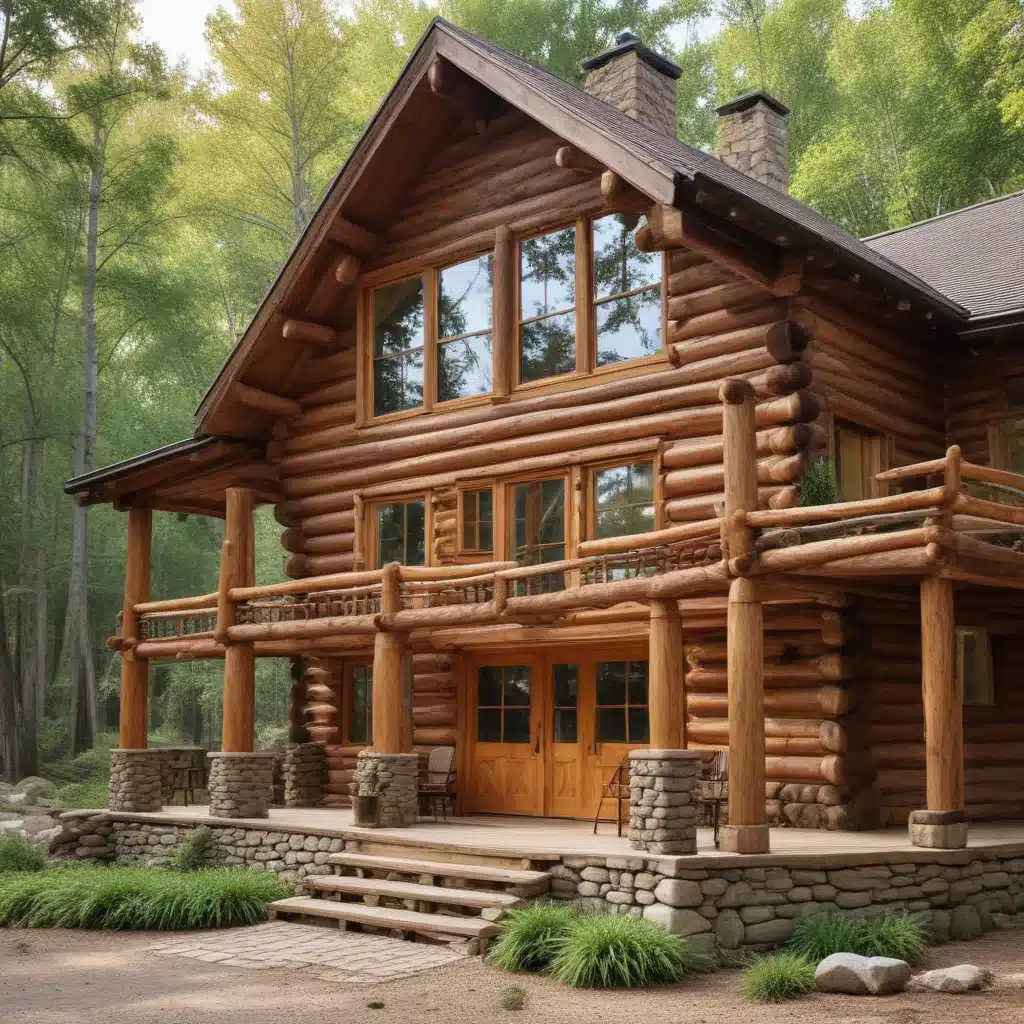
The Enduring Appeal of Log Homes
Log homes have long been a cherished part of American architectural heritage, reflecting the resourcefulness and craftsmanship of earlier generations. These sturdy, rustic dwellings not only provide shelter but also embody a sense of connection to the natural world and the pioneering spirit that shaped the nation’s development. As modern homeowners increasingly seek to incorporate traditional building techniques and sustainable materials into their living spaces, the preservation and restoration of historical log cabin designs have become a growing priority.
In the United States, log home construction has evolved over centuries, adapting to the availability of local resources, regional climates, and the evolving needs of homeowners. From the simple single-room cabins of the 17th and 18th centuries to the more elaborate log and timber frame hybrid homes of the 19th and early 20th centuries, each era has left its mark on the design and construction of these iconic structures. Maintaining the integrity of these historical log cabin designs is crucial not only for preserving the architectural heritage but also for creating energy-efficient, environmentally-friendly living spaces that seamlessly blend modern comforts with timeless charm.
Reviving Traditional Building Techniques
The construction of traditional log homes often relied on specialized skills and tools honed over generations. The use of hand-hewn logs, dovetail or V-notch joinery, and meticulous attention to detail were hallmarks of the craft. As the demand for log homes has surged in recent decades, there has been a renewed interest in reviving these time-honored building techniques.
One of the key aspects of maintaining the integrity of historical log cabin designs is the use of authentic materials and construction methods. This may include sourcing locally-harvested timber, hand-peeling and shaping logs, and employing traditional joinery techniques such as dovetailing or saddle-notching. These practices not only preserve the aesthetic qualities of the original structures but also ensure the structural integrity and longevity of the home.
| Traditional Log Home Building Techniques | Modern Log Home Building Techniques |
|---|---|
|
– Hand-hewn and hand-peeled logs – Dovetail or V-notch joinery – Mortise-and-tenon connections – Use of hand tools and specialized equipment – Attention to detail and craftsmanship |
– Machine-milled and pre-cut logs – Interlocking log systems – Power tools and modern construction machinery – Emphasis on efficiency and cost-effectiveness – Potential for loss of traditional character |
In addition to the use of traditional building techniques, the careful selection of sustainable and historically-appropriate materials is crucial for preserving the integrity of log cabin designs. This may include the use of locally-sourced timber, such as oak, pine, or cedar, which not only reduces the environmental impact of construction but also ensures the authenticity of the final product.
Embracing Eco-Friendly Materials and Energy Efficiency
As the demand for energy-efficient and environmentally-conscious living spaces continues to grow, the integration of sustainable materials and energy-saving technologies into historical log cabin designs has become an increasingly important consideration. By incorporating modern insulation techniques, high-performance windows, and renewable energy sources, homeowners can preserve the timeless charm of log homes while enhancing their overall energy efficiency and reducing their environmental footprint.
| Eco-Friendly Materials for Log Home Construction | Energy-Efficient Features for Log Homes |
|---|---|
|
– Locally-sourced, sustainably-harvested timber – Natural insulation materials (e.g., cellulose, wool, hemp) – Non-toxic sealants and finishes – Reclaimed or recycled building materials – Minimizing waste and carbon footprint during construction |
– High-performance windows and doors – Efficient heating and cooling systems – Passive solar design strategies – Renewable energy systems (e.g., solar panels, geothermal) – Advanced insulation techniques (e.g., spray foam, rigid insulation) – Energy-efficient appliances and lighting |
By embracing eco-friendly materials and energy-efficient technologies, homeowners can not only reduce the environmental impact of their log home but also enjoy long-term cost savings on utility bills and maintenance. This approach not only preserves the historical integrity of the structure but also aligns with the growing demand for sustainable and energy-conscious living solutions.
Navigating the Costs of Log Home Construction
The construction of a custom log home can be a significant investment, with costs ranging widely depending on factors such as the size of the home, the type of logs used, the level of craftsmanship, and the integration of sustainable materials and energy-efficient features. On average, the cost of building a log home in the United States can range from $150 to $300 per square foot, with higher-end custom homes potentially reaching $400 or more per square foot.
| Cost Considerations for Log Home Construction | Estimated Cost Range (USD per square foot) |
|---|---|
|
– Log materials (hand-peeled, machine-milled, or pre-cut) – Specialized labor and craftsmanship – Foundation and site preparation – Heating, cooling, and ventilation systems – Insulation and energy-efficient features – Finishes and interior details |
– Basic log home construction: $150 – $200 per sq. ft. – Mid-range custom log home: $200 – $300 per sq. ft. – High-end custom log home with premium materials and features: $300 – $400+ per sq. ft. |
It’s important to note that the cost of log home construction can vary significantly based on regional factors, such as the availability of local timber resources, labor costs, and local building codes and regulations. Homeowners should work closely with experienced log home builders, architects, and designers to develop a realistic budget and understand the full scope of costs involved in preserving the integrity of historical log cabin designs.
Conclusion
The preservation and restoration of historical log cabin designs in the United States offer a unique opportunity to celebrate the country’s architectural heritage while creating energy-efficient, sustainable living spaces that meet the needs of modern homeowners. By embracing traditional building techniques, eco-friendly materials, and energy-saving technologies, log home enthusiasts can ensure that these iconic structures continue to captivate and inspire for generations to come.
For more information on custom log home construction and the latest advancements in sustainable building practices, visit Jorgensen Log Homes, a leading provider of high-quality log homes in the United States.


